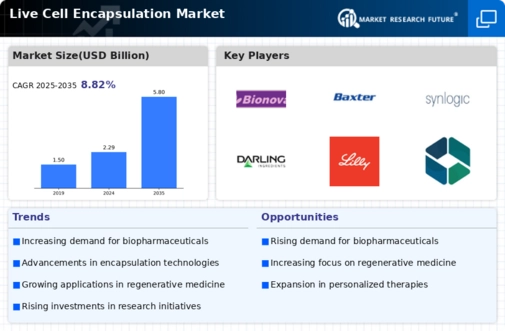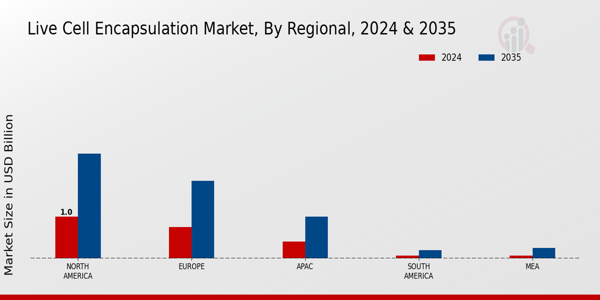Market Share
Live Cell Encapsulation Market Share Analysis
Live Cell Encapsulation Market is increasing rapidly because more people want to employ cells to cure many diseases. In this evolving industry, companies utilize strategic market share positioning to differentiate their live cell packaging technology. Businesses develop novel packaging materials to remain competitive. The greatest cell treatment options come from these companies because they constantly develop new polymers and nanomaterials that make confined cells more viable and valuable. Since cell-based therapies are so varied, companies tailor their packaging to them. Whether it's stem cells, pancreatic islets, or other restorative cells, customisation ensures the optimal encapsulation procedure. Companies invest in packaging solutions to boost efficiency and scalability. These firms lead their areas by using innovative microencapsulation and macroencapsulation procedures to extend cell life, release pharmaceuticals safely, and improve cures. Enclosing living cells requires biocompatibility. Companies work hard to make safe, immune-protective materials. These technologies are trusted and patient-friendly because they prioritize safety and efficacy. Market positioning requires deliberate collaboration with academic and research institutes. Regenerative medicine and cell biology specialists help companies test and develop packaging methods. This respects and inspires fresh ideas. Because cell therapies may be utilized by many, companies invest on scale-up expertise. These companies are trustworthy partners for large-scale cell treatment because they ensure packaging technologies can be scaled up for commercial usage. Following regulators' regulations is crucial in live cell packing. Companies invest heavily on licensing and quality control to ensure their technologies meet or exceed regulator requirements. Trust between regulators and healthcare providers grows. By developing less-invasive packaging technologies, companies prioritize patient care. Minimally invasive cell therapy approaches make patients more comfortable and receptive to novel treatments, helping the market. Market share is determined by licensing and collaboration agreements. Companies collaborate with pharmaceutical, biotech, and other sectors to improve packaging for more people. Cell treatment gains popularity more easily. It is crucial that the confined cells remain alive and stable. Companies invest in R&D to improve cell survival, usefulness, and long-term healing. This helps them commercialize capsule technology. Teaching healthcare personnel and the public about live cell encapsulation's advantages is crucial to market share. Companies use seminars, conferences, and internet resources to promote their goods as cutting-edge regenerative medicine solutions.














Leave a Comment